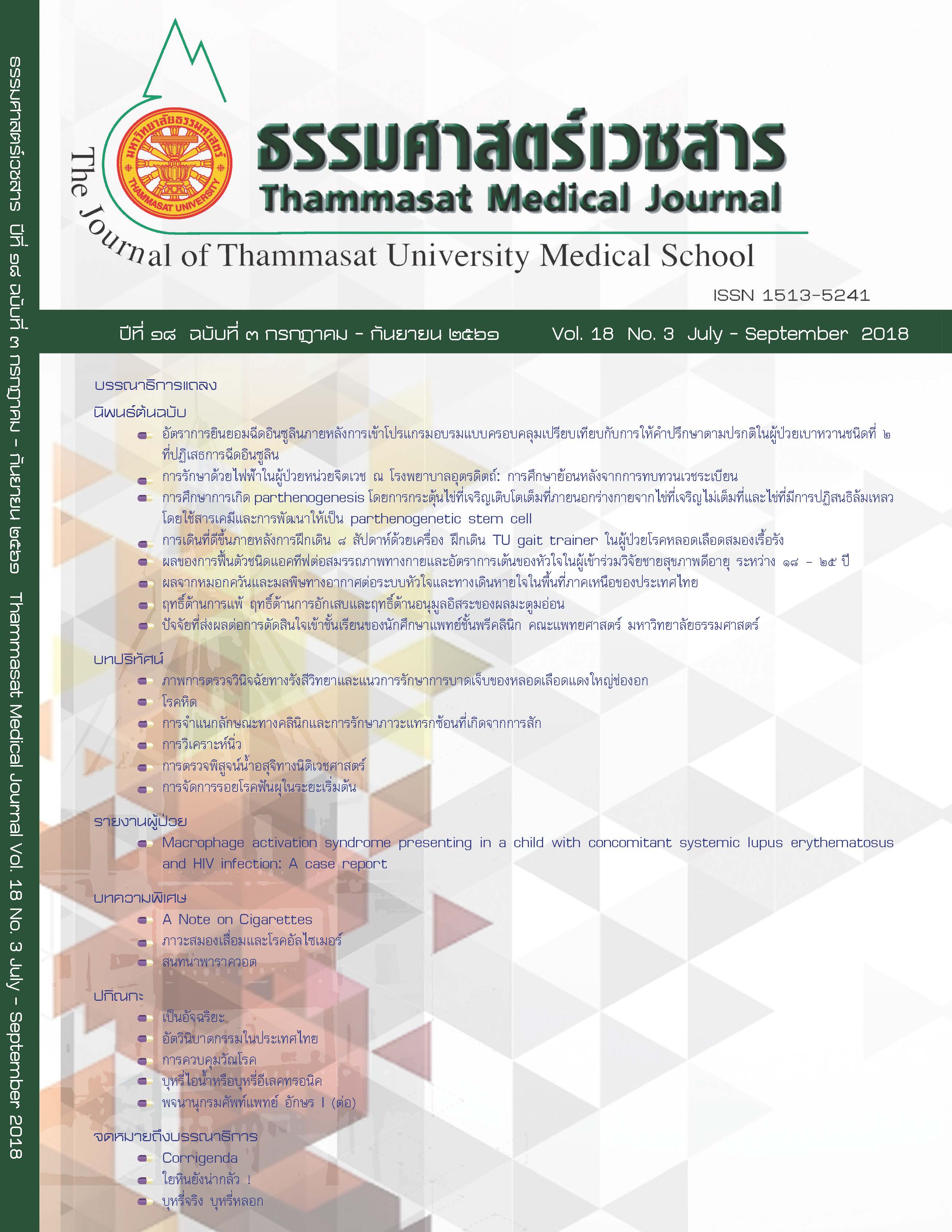Improving gait speed and walking distances after 8 weeks training with TU gait trainer in patients with chronic stroke
Keywords:
Chronic stroke, TU gait trainer, Rehabilitation, GaitAbstract
Introduction: Walking independently is the major goal for stroke rehabilitation. Gait training machine with partial body-weight support helps patients to be able to relearn the correct gait pattern. There are no previous studies about the gait efficiency in chronic stroke patients after training with TU gait trainer that have been developing in Thailand. To study lower extremity impairments and walking efficiency in chronic stroke patients after an 8-week gait training with TU gait trainer.
Method: Fifteen chronic stroke patients were participated in this study. General Health Information was recorded. All participants were received training on 30-minute for upper extremity and sit to stand and follow by for 30-minute gait training with TU gait trainer, 3 days a week for 8 weeks. Lower extremity impairments and walking efficiency were assessed by Fugl-Meyer Motor Assessment (LE), 6-Minute Walk Test (6MWT), 10 Meter Walk Test (10MWT) and Time Up and Go Test (TUG) in week 0, 2, 4, 6, and 8. Repeated measures ANOVA was used for analysis data.
Result: The lower extremity functions were significantly improving after 4-8 weeks of training. Gait speed and walking distances were significantly improve after 2, 4, 6 and 8 weeks of training.
Discussion and Conclusion: After 8 weeks training with TU gait trainer improve lower limb impairments, walking distances, and gait speed in chronic stroke.



